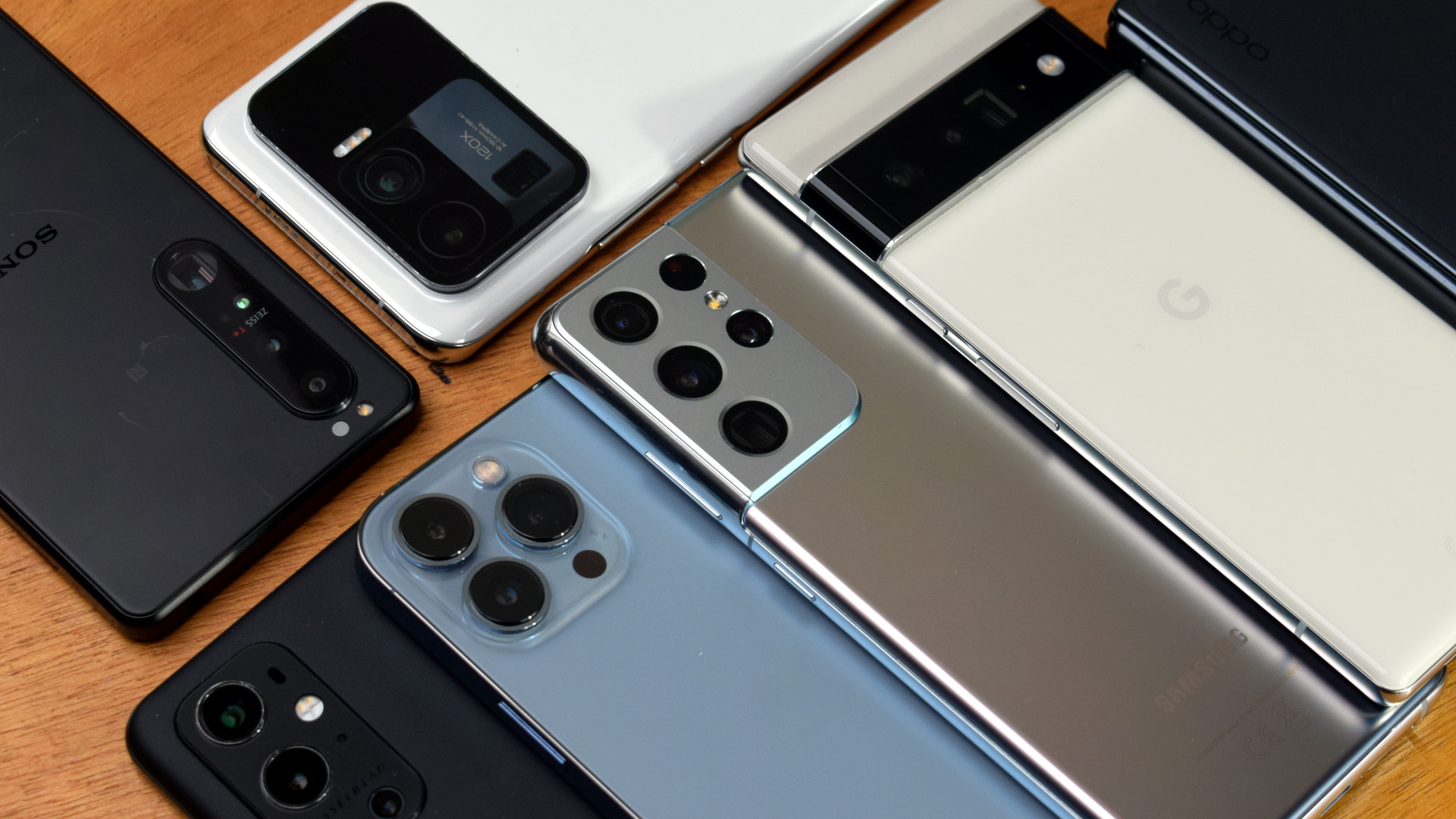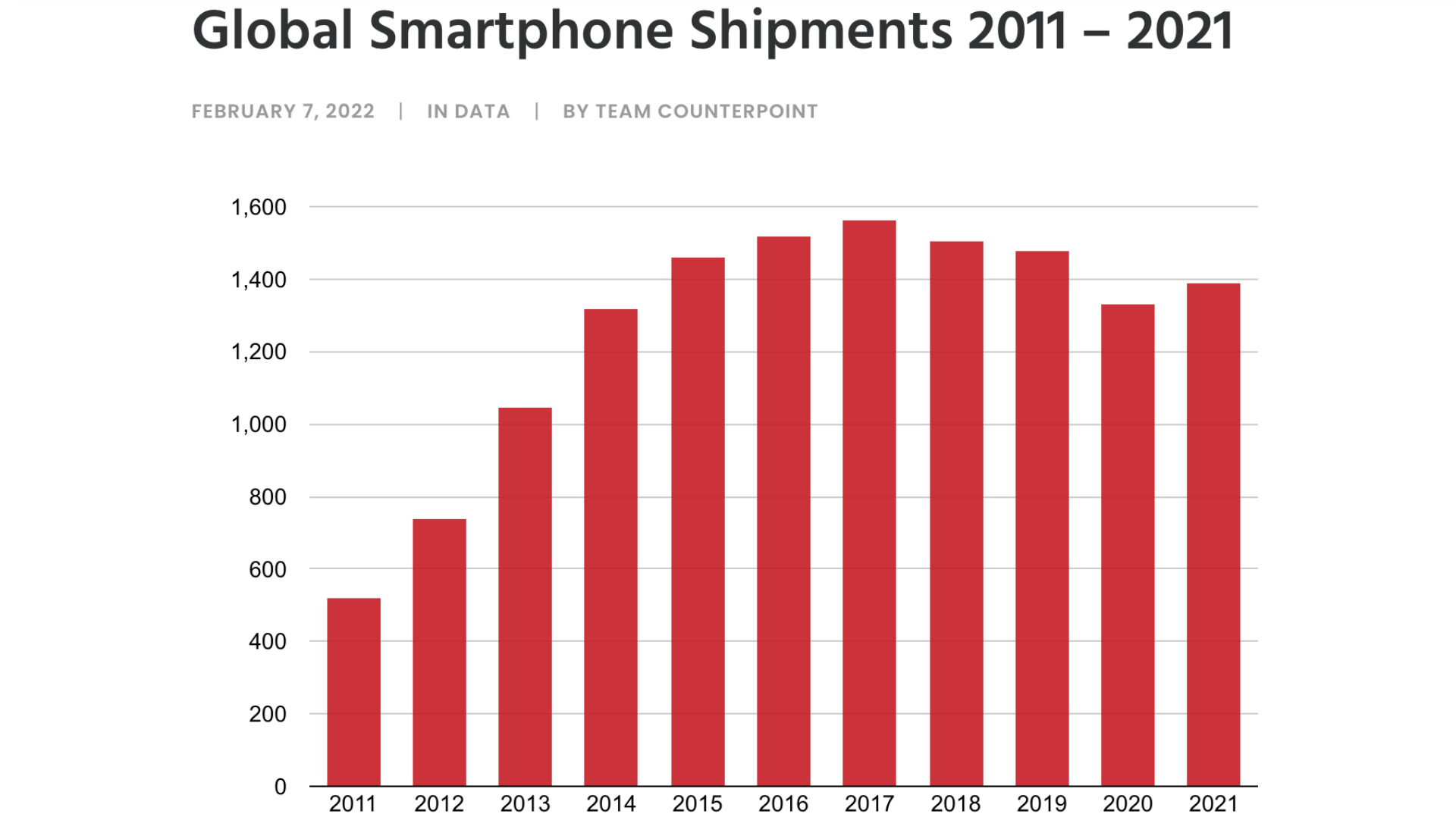Affiliate links on Android Authority may earn us a commission. Learn more.
Is the smartphone peak behind us for good? Here's what data shows
July 1, 2022

- Smartphone sales are below 100 million for the second time in eight years.
- The market hit its peak back in 2016-17.
- Economic slowdown, rising inflation, and the Ukraine crisis are some of the reasons for the decline.
Global smartphone sales have plummeted below 100 million units for the second time in eight years. It’s the worst sales have been since the pandemic hit in 2020, according to a report by Counterpoint Research.
Smartphone sales clocked 96 million units in May 2022. That’s a 4% decline compared to April and a notable 10% drop compared to May last year.
What’s causing this decline? Well, it seems that even though the smartphone market is slowly tiding over the global chip shortage and supply constraints, it’s now facing a demand slump due to rising inflation, China’s economic slowdown, and the Ukraine crisis.
Is the smartphone peak behind us for good?
Remember 2016-2017? Apple released its first iPhone SE, which was a game-changer for its time. LG was still making phones like the V20 with two displays. Samsung had the Galaxy Note 7 disaster. Motorola introduced the modular Moto Z. Well. That was the time when the smartphone market was at its peak. Global smartphone sales in 2016 totaled a whopping 1.5 billion units.
Fast forward to 2022, and smartphone makers are struggling with inventory build-up because people are buying fewer phones. This, in turn, is leading to declining shipments and order cuts from smartphone manufacturers, notes Counterpoint.

That said, things do look hopeful for the second half of 2022. Counterpoint’s research shows that new launches and promotion periods starting in June will help the smartphone market recover lost gains.
“At the end of May, the Chinese government convened a meeting for large-scale economic stability countermeasures. The government is expected to implement more aggressive policies to stimulate the economy in the second half. Besides, we believe that new foldable smartphone launches, led by Samsung, will be able to stimulate demand in the premium segment,” said Liz Lee, Senior Analyst at Counterpoint Research.
The research firm still expected the smartphone market to shrink by 3% this year compared to 2021.
Research Director Tarun Pathak states, “The demand for a smartphone, especially in the advanced economies, is driven by replacement, which makes it a discretionary purchase. And inflationary pressures are leading to pessimistic consumer sentiment around the globe with people postponing non-essential purchases, including smartphones.”
In a nutshell, for the industry to return to previous heights, it’ll have to wait for economic recovery and overcome other destabilizing factors such as the pandemic and supply constraints.